Susan Berk-Seligson - The Bilingual Courtroom: Court Interpreters in the Judicial Process
Here you can read online Susan Berk-Seligson - The Bilingual Courtroom: Court Interpreters in the Judicial Process full text of the book (entire story) in english for free. Download pdf and epub, get meaning, cover and reviews about this ebook. year: 2017, publisher: The University of Chicago Press, genre: Home and family. Description of the work, (preface) as well as reviews are available. Best literature library LitArk.com created for fans of good reading and offers a wide selection of genres:
Romance novel
Science fiction
Adventure
Detective
Science
History
Home and family
Prose
Art
Politics
Computer
Non-fiction
Religion
Business
Children
Humor
Choose a favorite category and find really read worthwhile books. Enjoy immersion in the world of imagination, feel the emotions of the characters or learn something new for yourself, make an fascinating discovery.
- Book:The Bilingual Courtroom: Court Interpreters in the Judicial Process
- Author:
- Publisher:The University of Chicago Press
- Genre:
- Year:2017
- Rating:4 / 5
- Favourites:Add to favourites
- Your mark:
The Bilingual Courtroom: Court Interpreters in the Judicial Process: summary, description and annotation
We offer to read an annotation, description, summary or preface (depends on what the author of the book "The Bilingual Courtroom: Court Interpreters in the Judicial Process" wrote himself). If you haven't found the necessary information about the book — write in the comments, we will try to find it.
This second edition of the The Bilingual Courtroom includes a fully updated review of both theoretical and policy-oriented research relevant to the use of interpreters in legal settings, particularly from the standpoint of linguistic pragmatics. It provides new insights into interpreting in quasi-judicial, informal, and specialized judicial settings, such as small claims court, jails, and prisons; updates trends in interpreter certification and credentialing, both in the United States and abroad; explores remote interpreting (for example, by telephone) and interpreter training programs; looks at political trials and tribunals to add to our awareness of international perspectives on court interpreting; and expands upon cross-cultural issues. Also featuring a new preface by Berk-Seligson, this second edition not only highlights the impact of the previous versions of The Bilingual Courtroom, but also draws attention to the continued need for critical study of interpreting in our ever diversifying society.
Susan Berk-Seligson: author's other books
Who wrote The Bilingual Courtroom: Court Interpreters in the Judicial Process? Find out the surname, the name of the author of the book and a list of all author's works by series.

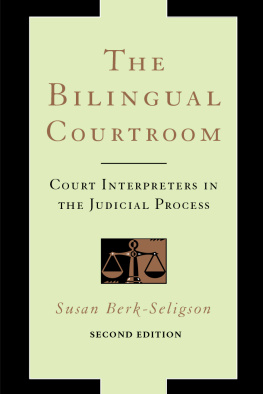

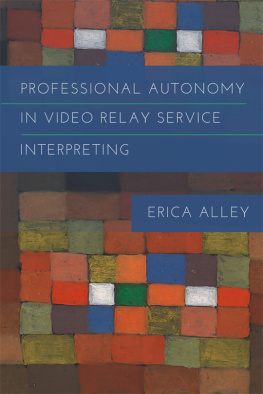
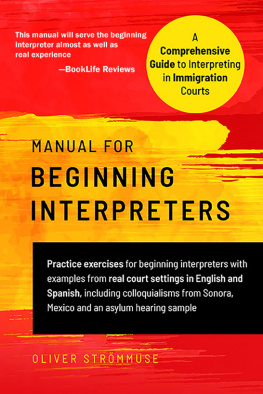
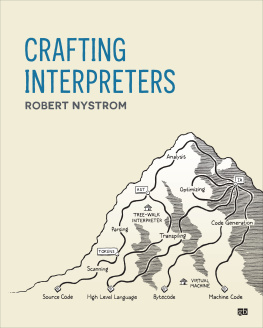

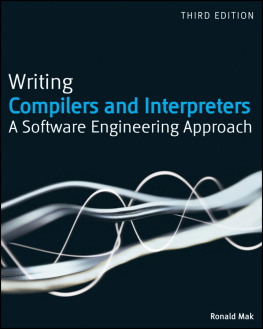
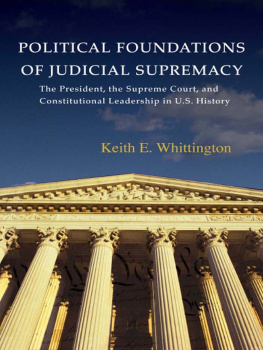
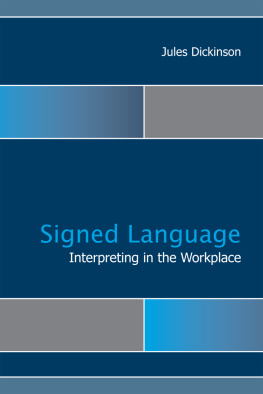
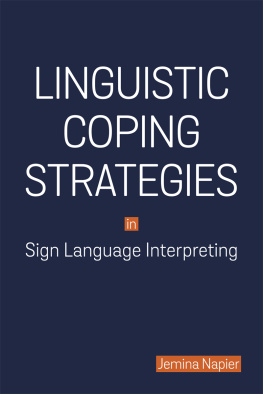
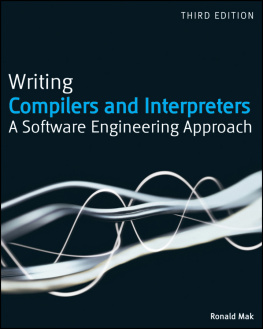

 This paper meets the requirements of ANSI/NISO Z39.48-1992 (Permanence of Paper).
This paper meets the requirements of ANSI/NISO Z39.48-1992 (Permanence of Paper).